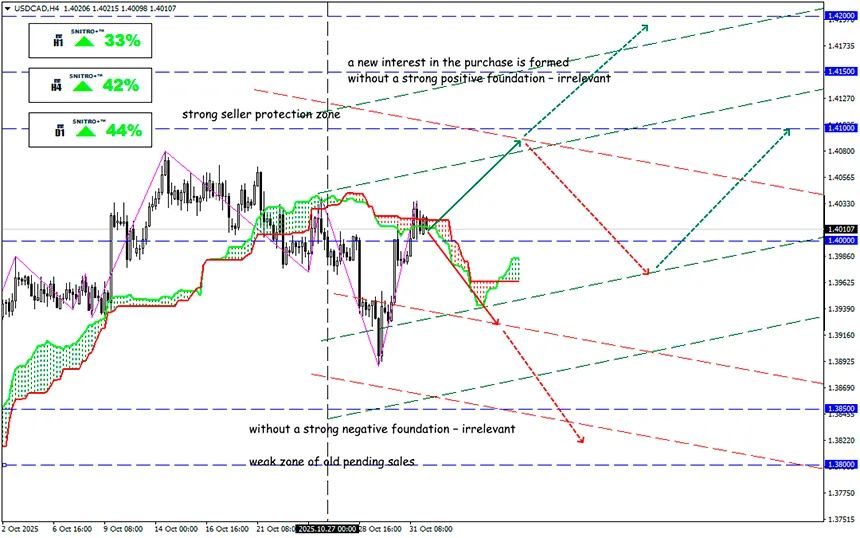Playing on Foreign Ground: China Didn’t Win, but Trump Lost

USD/CAD
Key zone: 1.3950 - 1.4050
Buy: 1.4050 (on a pullback after retesting the 1.40 level) ; target 1.4200-1.4250; StopLoss 1.3980
Sell: 1.3900 (on strong negative fundamentals) ; target 1.3750; StopLoss 1.3970
The meeting between Trump and Xi Jinping can be seen as both a personal failure for Trump and a setback for U.S. official diplomacy.
The negotiations lasted much shorter than Trump claimed; moreover, there was no joint statement following the meeting. Both sides stayed within the limits of what had been pre-agreed by their working groups. Press statements were issued separately and contradicted each other on key issues.
On Friday, Donnie announced his intention to cut tariffs on China by another 10%, which effectively offsets the fentanyl-related tariff. The situation looks odd: Trump, who made tariff “punishment” of China a core campaign slogan, is suddenly willing to compromise—while punishing allies like Canada instead.
It’s clear that such a trade war should never have been started without alternative sources of critical materials, a problem known since Trump’s first term.
On November 5, the U.S. Supreme Court begins hearings on the legality of many Trump-era tariffs, a move that could upend current assessments of their impact on the U.S. economy and the Fed’s policy stance.
For instance, a Yale University study found that the average effective tariff rate applied to Chinese goods before last week’s negotiations was only 27.8%, not the 57% that Trump proudly proclaimed.
So Donnie’s math doesn’t add up: after the 10% reduction on fentanyl-related goods, the effective U.S. tariff rate on Chinese imports is now closer to 17.8%, not 47%. Trump is tougher on America’s current allies (such as the EU or Canada) than on China, on which the U.S. remains heavily dependent for materials and manufactured goods.
As a result:
- Partial and temporary suspension or reduction of reciprocal tariffs has been agreed; the average U.S. tariff burden on Chinese goods will drop to about 41%, while China’s on U.S. goods will fall to roughly 28%.
- No long-term agreement was reached — tariffs could be reinstated or even raised again within 90 days.
- The current deal is essentially a truce period during which both sides will discuss next steps.
Key issues remain unresolved:
- forced technology transfer;
- subsidies to Chinese state-owned enterprises;
- limited access for foreign firms to China’s domestic market;
- control over rare earth metals.
Even with reductions, mutual tariffs remain 2–3 times higher than pre–trade war levels. For importers and exporters, this still means higher costs and lower profit margins.
Still, the markets welcomed at least a temporary easing of U.S.–China trade tensions—likely lasting until August 2026, when the current framework expires and a new round of political maneuvering will begin ahead of U.S. congressional elections.
For the next one to two quarters, volatility across risk assets (stocks, commodities, and emerging market currencies) should decline slightly. Some previously hedged positions may be reopened under the assumption of temporary stabilization. Long-term risks, however, remain.
So we act wisely and avoid unnecessary risks.
Profits to y’all!

















